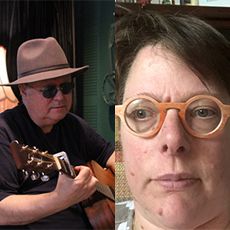Vibrational Music Therapy with D/deaf clients
DOI:
https://doi.org/10.15845/voices.v22i3.3388Abstract
D/deaf clients perceive music through their bodies. The music therapist needs various methods to appreciate these sensations. It is necessary to examine the instruments from a vibrational perspective. Also, listening to the client is more important than speaking. This article focuses on how non-verbal methods are more appropriate when working with clients who have a hearing loss. Vibrosensoric approach to music combined with touch-based communication methods (social-haptic communication) enhances a positive client response. As a deafblind music therapist, musical vibrations play an important role for me as well as for the client during a therapy process. Background noise and spoken language can sometimes mask the perception of musical tones from different types of instruments. Speech with music within GIM sessions renders the client unable to follow either music or storyline. This distorts the sounds in hearing aid devices. Therefore, the instrument selection within the therapy session needs to be considered from a vibratory aspect. Musical tones from the instruments can be felt in different parts of the body. In this case, the focus is not on how an instrument sounds but more on the vibrational sensations it produces.

Downloads
Additional Files
Published
How to Cite
Issue
Section
License
Copyright (c) 2022 Stina Ojala, Russ C. Palmer

This work is licensed under a Creative Commons Attribution 4.0 International License.
Articles published prior to 2019 are subject to the following license, see: https://voices.no/index.php/voices/copyright

